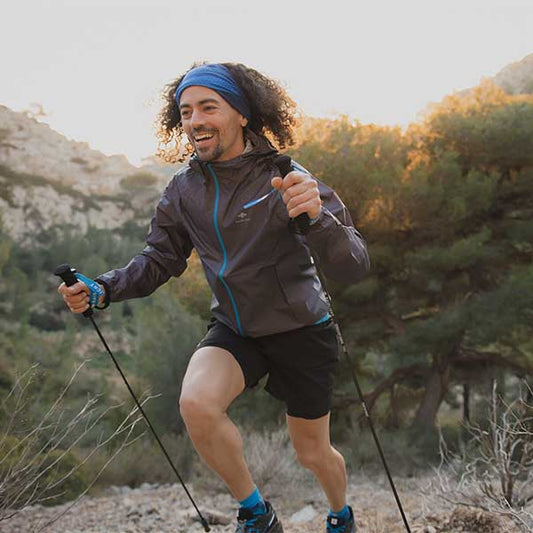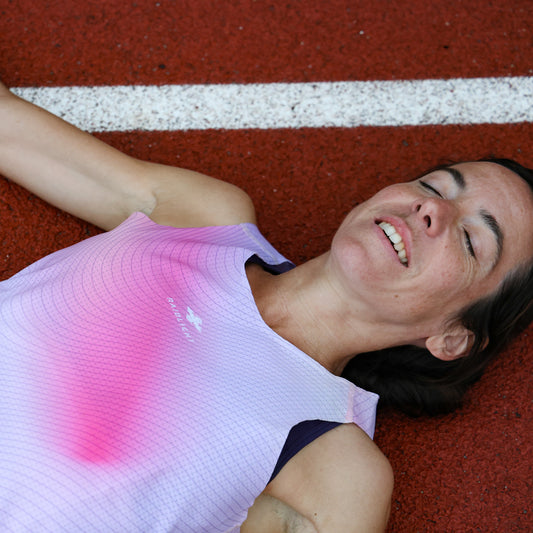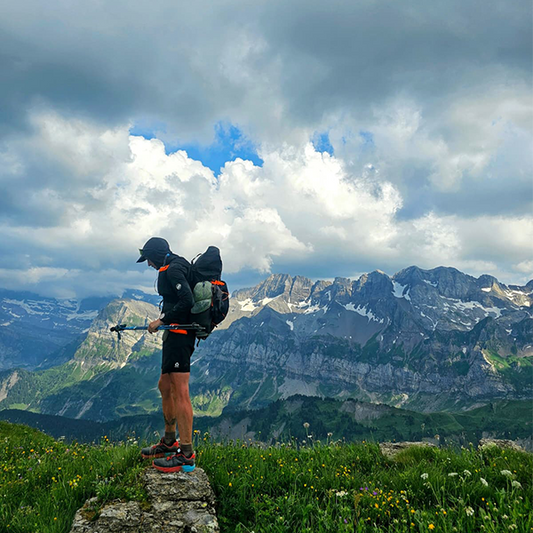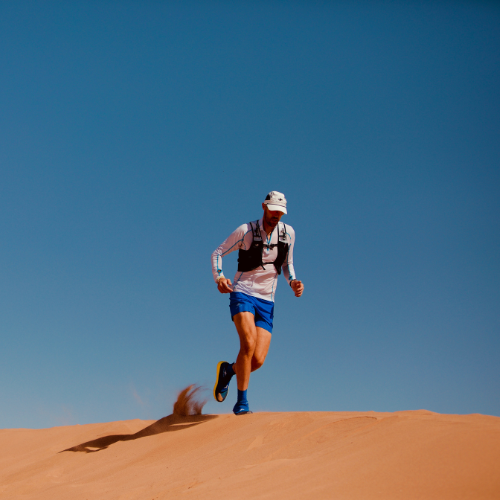Protecting yourself from the sun in trail running: the study that wants to change our habits
This year, during the UTMB® week in Chamonix, a major scientific study was dedicated to photoprotection in trail running. Conducted by an international team of French and American researchers from the University of Michigan and French dermatologists, this project directly questions our habits when facing UV exposure. The team went further than simple data collection by launching SunBeast, an educational program for athletes. The goal: to spread science-based practical advice and provide concrete tools to strengthen sun protection without compromising performance. Supported by Raidlight, it puts the health of trail runners at the heart of the practice.
Meeting with dermatologist and trail runner Stéphanie Leclerc-Mercier, the initiator of the project.
« trail runners do not protect themselves enough from the sun »
A trail runner-dermatologist on the front line
For several years, Stéphanie has observed that “trail runners do not protect themselves enough from the sun.” This observation pushed her to launch a research project in collaboration with several French and American researchers. “We are delighted to be here in Chamonix; we’ve been working for months on setting up this study, which aims to determine whether trail runners protect themselves sufficiently and what can be done to make sun protection in trail running as simple as taking a flask, a gel or a bar.”
The UV vs. thermoregulation dilemma
The question of textiles is central, but finding the right balance is a real puzzle. Some fabrics offer better UV protection… but with the risk of overheating. “In theory, the thicker and tighter the fabric, the better the protection,” confirms Dr. Leclerc-Mercier.
But this choice has obvious limits for a trail runner in full effort. A heavy or poorly designed fabric quickly becomes uncomfortable: “if it’s thick and not technical, you’ll get very hot and won’t be able to wear it,” she explains. Another detail to consider: “light-colored fabrics protect less than dark ones.”
It is therefore up to brands to offer suitable solutions. For the specialist, the challenge is clear: “That’s why it’s important for sports brands to create photoprotective products with UV fabrics that are light and technical.”
« even on black skin, sunscreen is necessary »
UV, an invisible danger for the skin… and the eyes
While the skin is the first target, the eyes are not spared. “UV rays affect the skin but also have a huge impact on the eyes,” emphasizes Stéphanie Leclerc-Mercier. Choosing sunglasses is therefore much more than a fashion accessory: “in the mountains, they must be at least category 3, and for some, even 4 (sun protection index ranked from 0 to 4). Ophthalmologists all agree on this.”
Another widespread misconception: tanning does not provide sufficient protection. The dermatologist reminds us that “even with black skin, phototype 6 (the highest in the classification), the natural UV protection is only 16 to 18. That’s far from the SPF 50 we recommend.” For lighter skins, even when tanned, protection remains insufficient: “at best, it’s SPF 6, so sunscreen is still necessary.” This is far from the SPF 50 recommendation, which blocks about 98% of UV rays. Proper sun protection remains essential for all skin types.
« From level 3, there is a risk of skin cancer… even in Paris in winter »
Summer or winter: same battle
Many runners still associate sun exposure risks with heat. However, the reality is different. Stéphanie reminds us of a key point: the UV index is the only reliable indicator, not the perceived temperature. “From 3 (UV index scale ranging from 1 to 11+), there is a risk of skin cancer,” she explains. And this applies regardless of the season: “depending on where you are in the world, the UV index can be well above 3, even in Paris in winter.”
At altitude, the risk remains: “in the mountains, we may think that with the cold, the sun is not strong, but often it is.” The only way to know if you need protection is to “check the UV index, which is available on many weather apps.”
The responsible trail runner’s basic kit
So, how to really run safely under the sun? For the dermatologist, three elements are absolutely essential for running in the sun. “First, protect your head: hat, cap, and of course, suitable sunglasses.”
Next comes body protection: “you need to cover yourself as much as possible with lightweight, technical clothing,” insists the specialist. Finally, the last indispensable ally: “broad-spectrum sunscreen, SPF 50+, covering UVA as well, on all uncovered areas.”
Interview conducted in Chamonix on 25/08/2025 by Clara Seraglini.
Thanks to Stéphanie Leclerc-Mercier for taking the time to answer our questions during UTMB® week. At Raidlight, we remain committed to offering technical equipment that protects all trail runners. Our UPF-certified clothing collection provides reliable UV protection while ensuring lightness and comfort on the trails.










